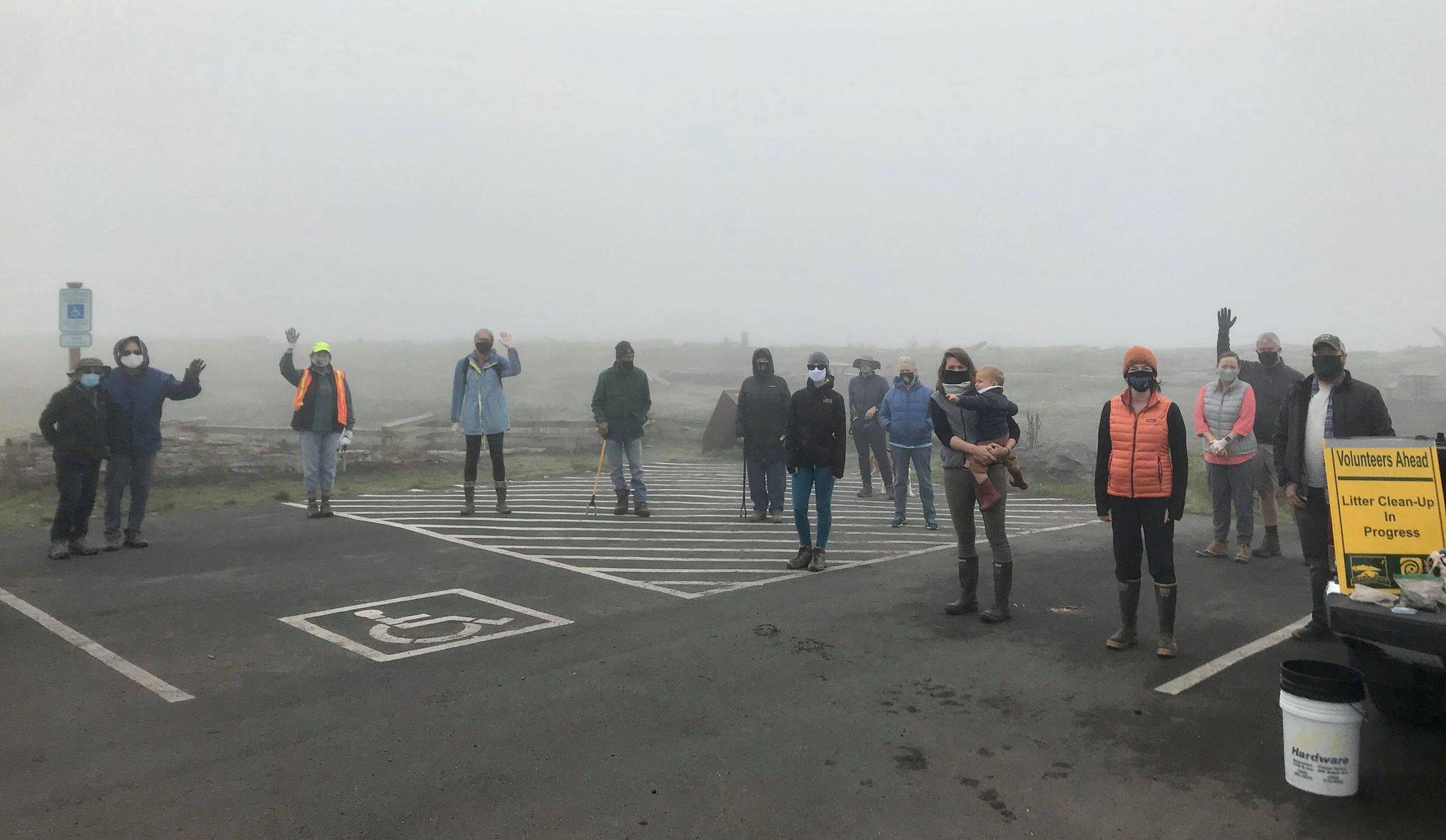Submitted by Karin Roemers-Kleven
San Juan County Marine Resource Committee Vice-Chair
In late September and early October, San Juan County residents hosted a week-long Great Island Clean Up. Volunteers from San Juan, Lopez, Shaw and Orcas Islands collected trash from beaches and roadways to help keep the islands beautiful. The GICU was organized by a collective of groups across the islands including the County’s Solid Waste Program, Lopez Exchange and Friends of the San Juans. Members from the SJC Marine Resource Committee (and its subcommittee Plastic Free Salish Sea) participated in the event along with many other islanders and their children. It was great to be out there! MRC member Jeff Dyer from Lopez Island went all out! He took his e-bike and kayak and went to several pocket beaches and found himself some major trash!
The San Juan Islands are regarded as the jewel of the Northwest. Long heralded by scientists as the most pristine ecosystem, our county’s marine environment covers 408 miles of shoreline and 447 square miles of San Juan County (72 percent) is water. It is in the heart of a body of water now called the Salish Sea which stretches from Olympia to Tacoma, to Seattle, to Vancouver, British Columbia, Canada, Victoria, British Columbia, Canada, and the Juan de Fuca Strait. By naming it the Salish Sea it allows us to realize that as the tides flow in and out of this large basin we are all connected and what happens in one area affects all the others. Once you name something, you can learn about it and protect it.
So what did we learn from this effort? We learned that some garbage is local.
A water balloon party on South Beach on San Juan Island left pieces of shattered rubber against the rocks. It was probably a really fun party but a high tide can flood those rocks and suck the debris out to sea where baleen whales, porpoises, seals, sea lions, water fowl or fish may mistake it for food and ingest it. If they are lucky it will pass through but necropsies in other countries have shown that often so much plastic is ingested that it kills an animal slowly.
A plastic bag from a local store flies out of the back of someone’s truck and wraps itself around twigs along the road. It then disintegrates slowly in the sun and parts are blown in a nearby ditch where during a rainstorm it gets carried out to the sea with the same effect on wildlife as the balloons.
We also learned that some garbage is regional. Garbage included bottle caps; gun wads; a Starbucks Coffee cup; a yacht brokerage sign from Seattle; and a cork from a British Columbia winery probably all entered the water outside of our county and drifted on the southern winds or raging currents towards us.
The plastics we find in our environment are like receiving a letter compelling us to do something. Plastic Free Salish Sea will be releasing several stories about the source of plastic waste and the impact it has on our islands and wildlife. Look for another “Letter from the Salish Sea” next month! In the meantime, visit our new website https://plasticfreesalishsea.org/ to find a “toolkit” to start your own path towards living with less plastic. Plastic outlasts us by 400 years. Only 13% is recycled. The rest goes to the dump or shipped off to an island nation, overwhelming it with our garbage. The new mantra is “Refuse”, “Reduce”, “Reuse”.




